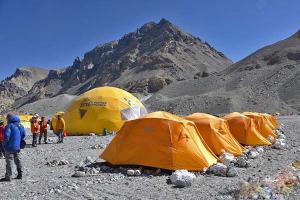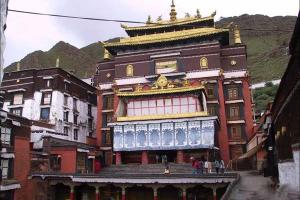Shigatse
Shigatse, also spelled Xigatse is the second largest city in the Tibet Autonomous Region of China. With a population or about 50,000, it is an important trading and administrative center. Located about 250 km (160 mi) southwest of Lhasa and 90 km (56 mi) northwest of Gyantse. It is the administrative centre of the modern Shigatse Prefecture, an administrative district of the TAR. Located at the intersection of several highways, the city of Xigatse is positioned on the Friendship Hwy. Buses and Mini-buses travel the distance from Lhasa. There is public transportation to Gyantse, Lhatse, Sakya, Dromo, Gampa and Khangmar on a semi-regular basis.
The city is located at an altitude of 3,840 metres (12,600 ft) at the confluence of the Yarlung Tsangpo (aka Brahmaputra) river and the Nyang River (Nyang Chu or Nyanchue) in west Tibet and was the ancient capital of U-Tsang province. Shigatse is also the name of the surrounding county.
What to see in Shigatse covers Tashilhunpo Monastery - the traditional seat of the Panchen Lamas. It was constructed in 1447 and is where the Panchen Lamas resided and conducted their religious and secular duties. Covering a floorspace of 300,000 square meters, the monastery is enshrined with the world's largest gilded bronze Buddhist statue, the 22.4 meter high statue of Maitreya Buddha. The free market and the gift market in Old Town; The ruins of the Xigatse Fortress.
Mt. Everest Base Camp
Two base camps are located on opposite sides of Mt. Everest (Everest Mountain): to the South in Nepal, and to the North in Tibet, China. Located at the altitude of 5,360 m/17,600 ft is South Base Camp in Nepal, and at 5,208 m/17,090 ft is the North Base Camp in Tibet.
Tashilumpo Monastery
The Tashilumpo (Tashilhunpo) Monastery, literally known as "Auspicious Sumeru Temple", is the largest temple in the town of Shigatse. It is the traditional seat of successive Panchen Lamas, and the second highest ranking tulku lineage in the Gelug (Gelugpa) Tibetan Buddhism hierarchy after Dalai Lama.








